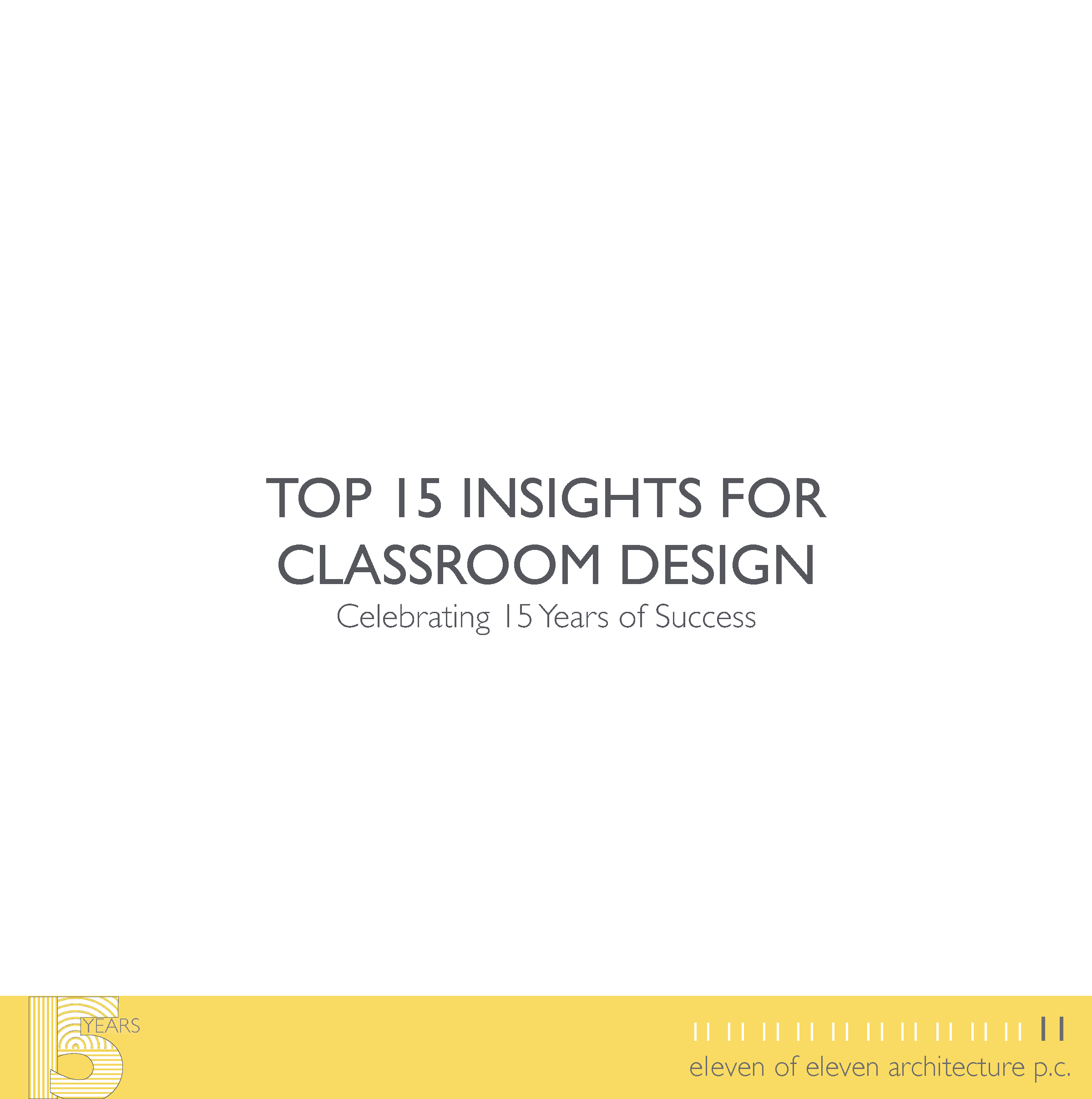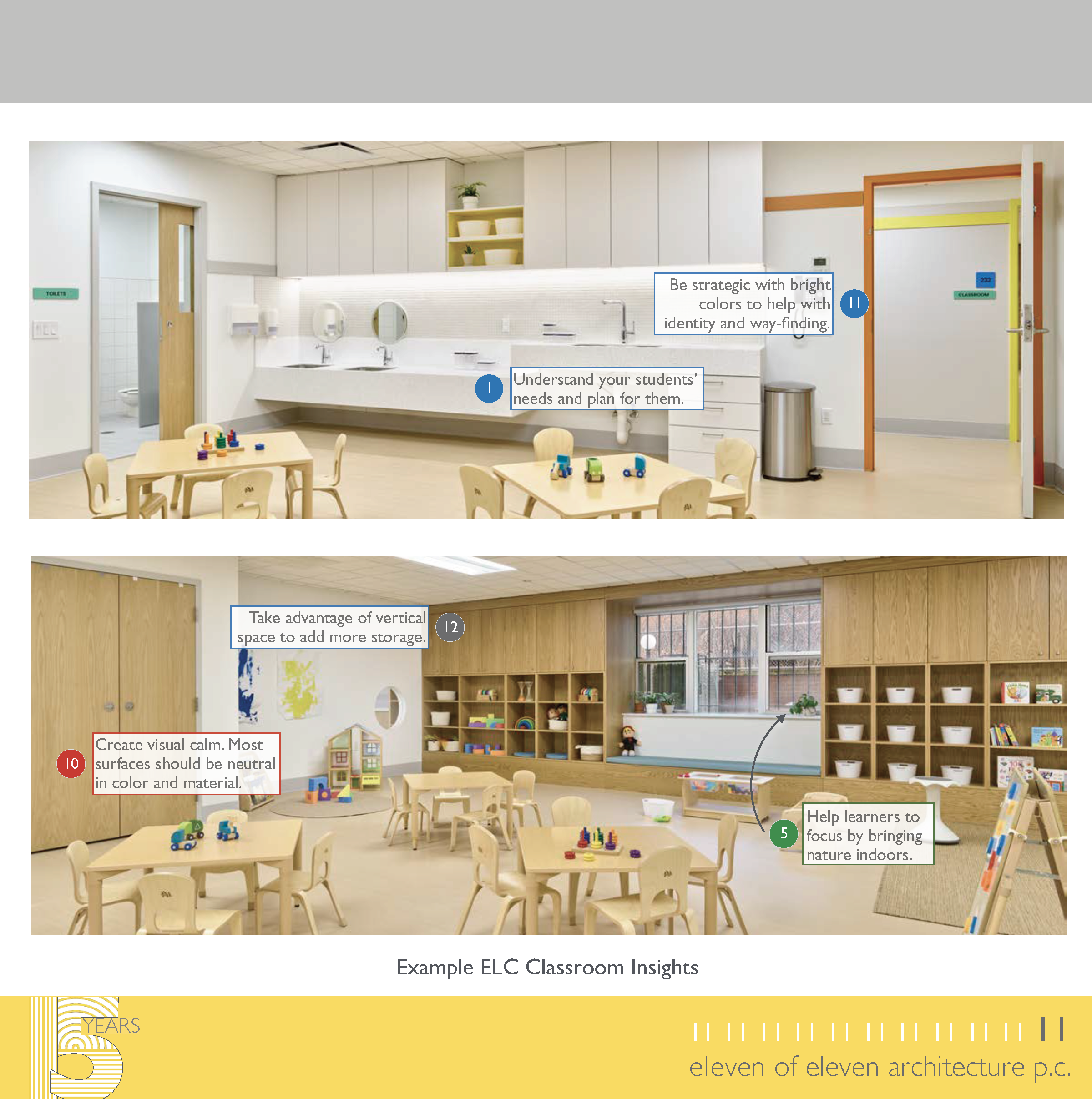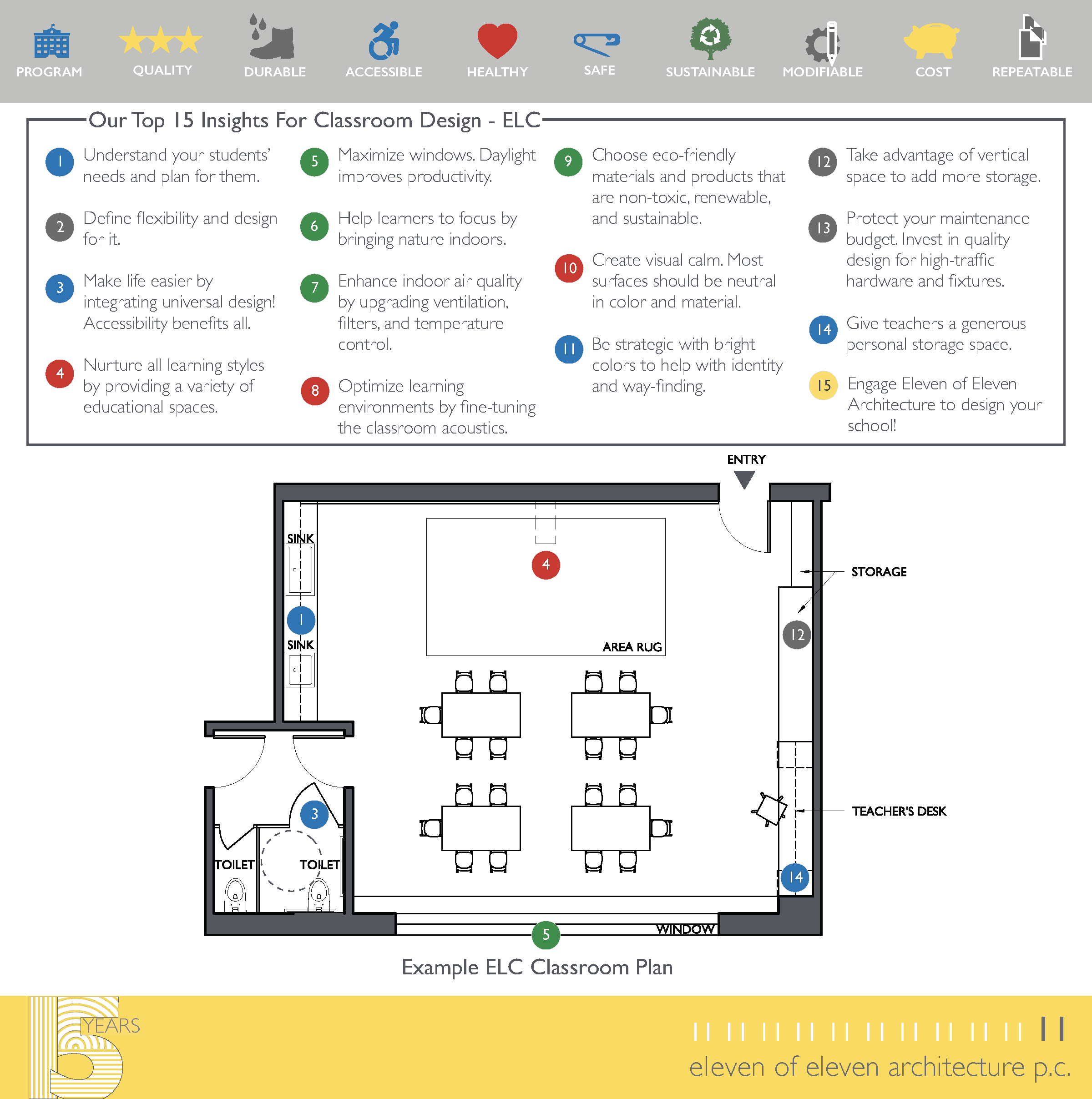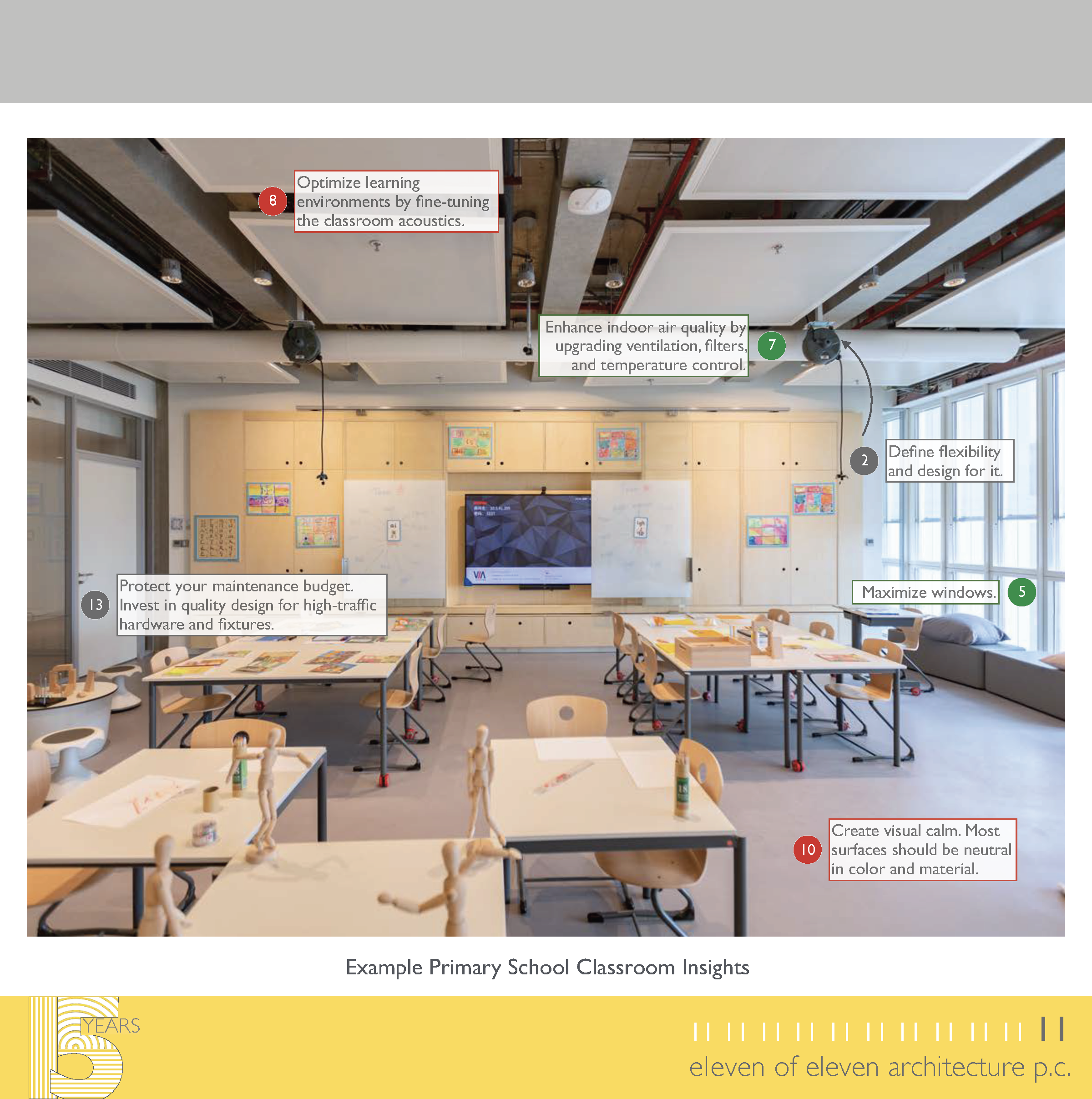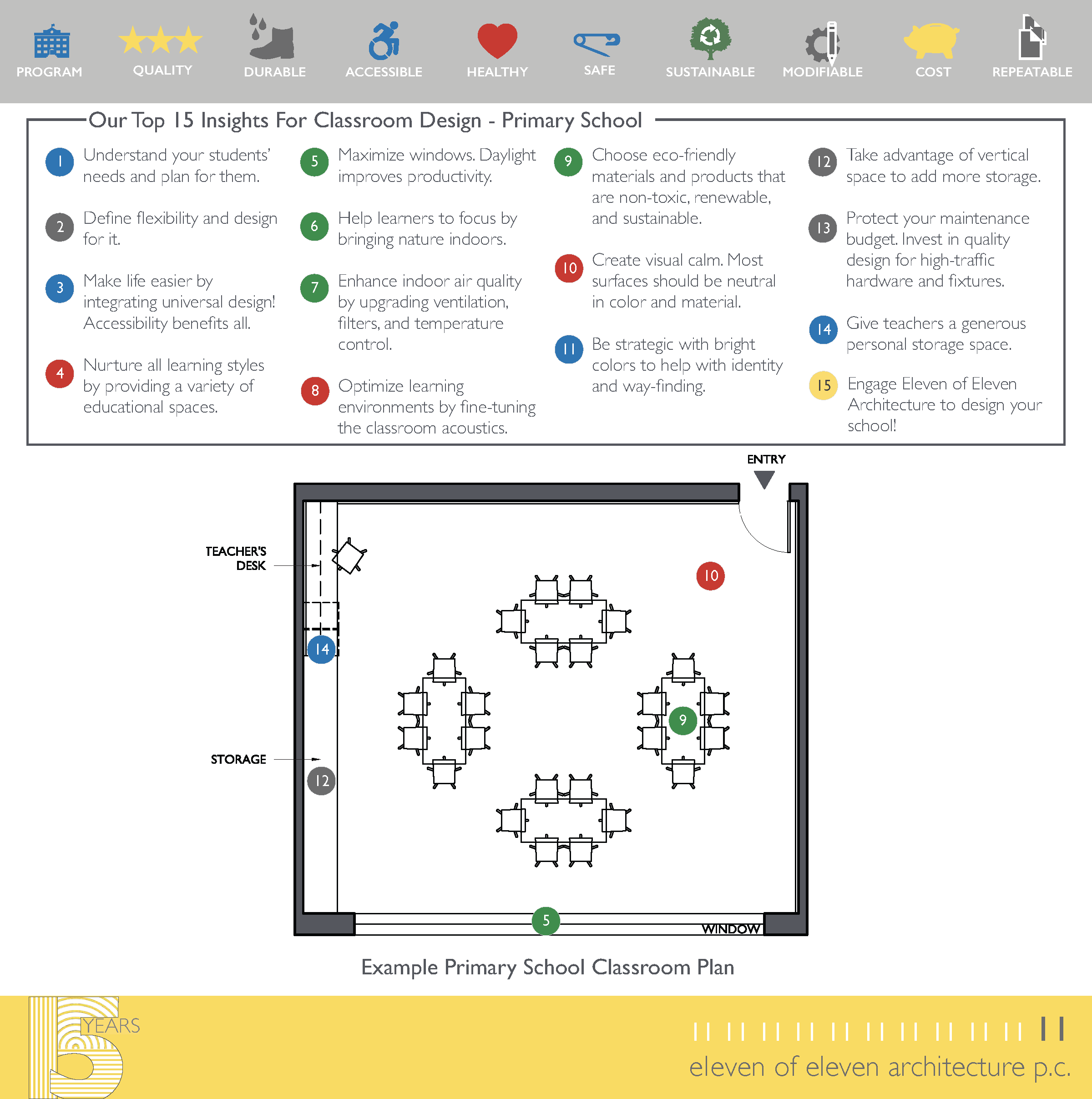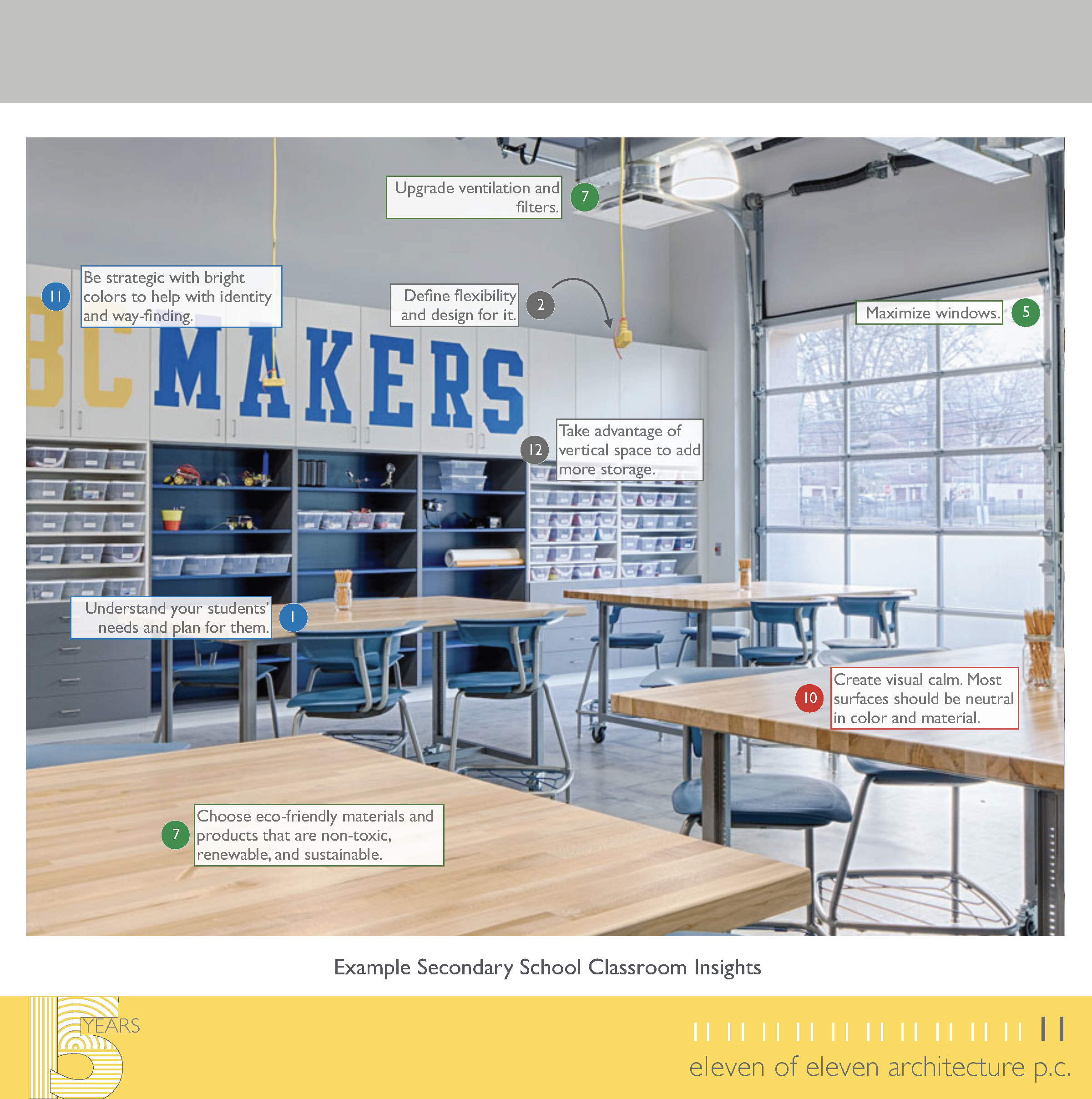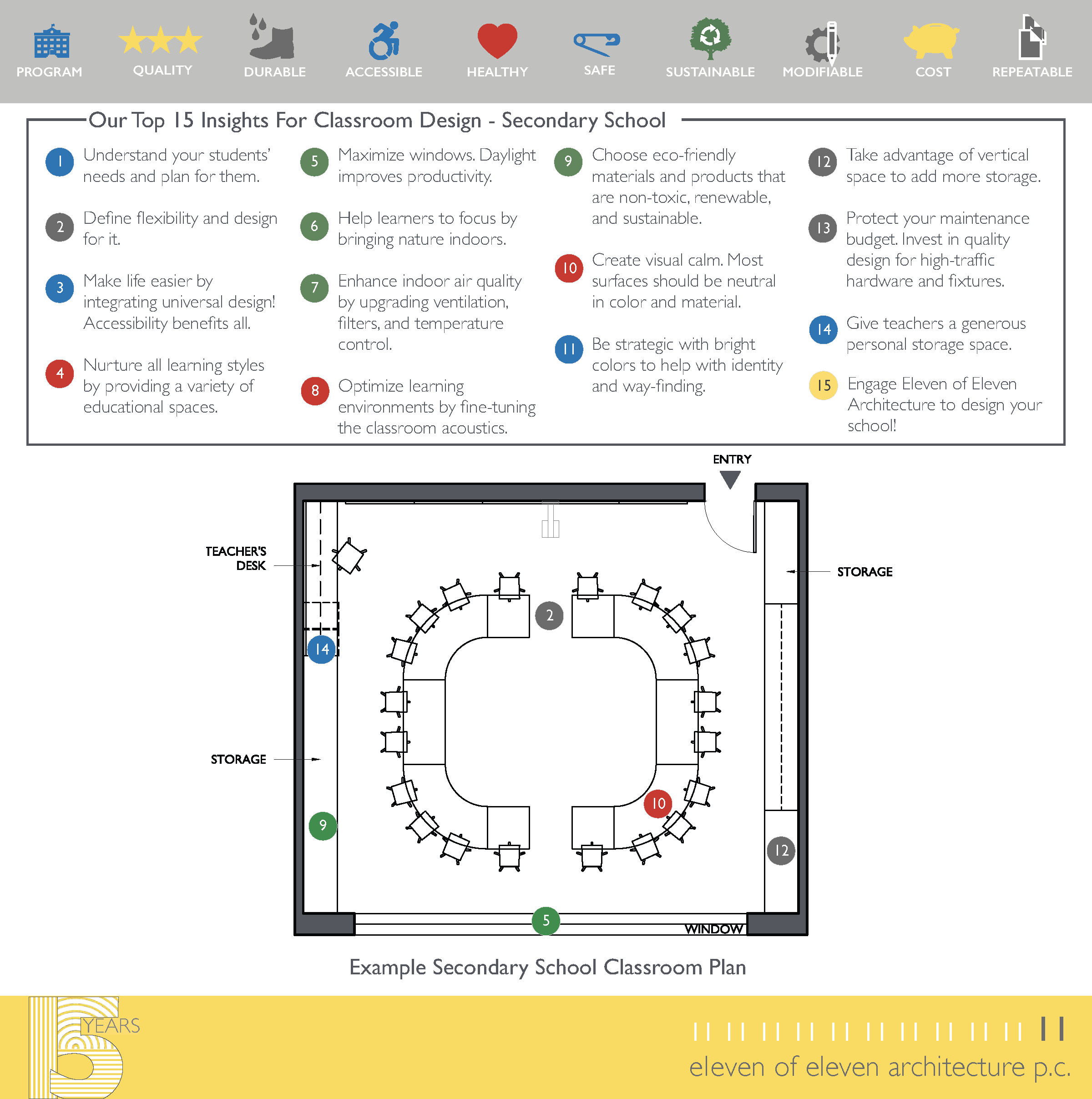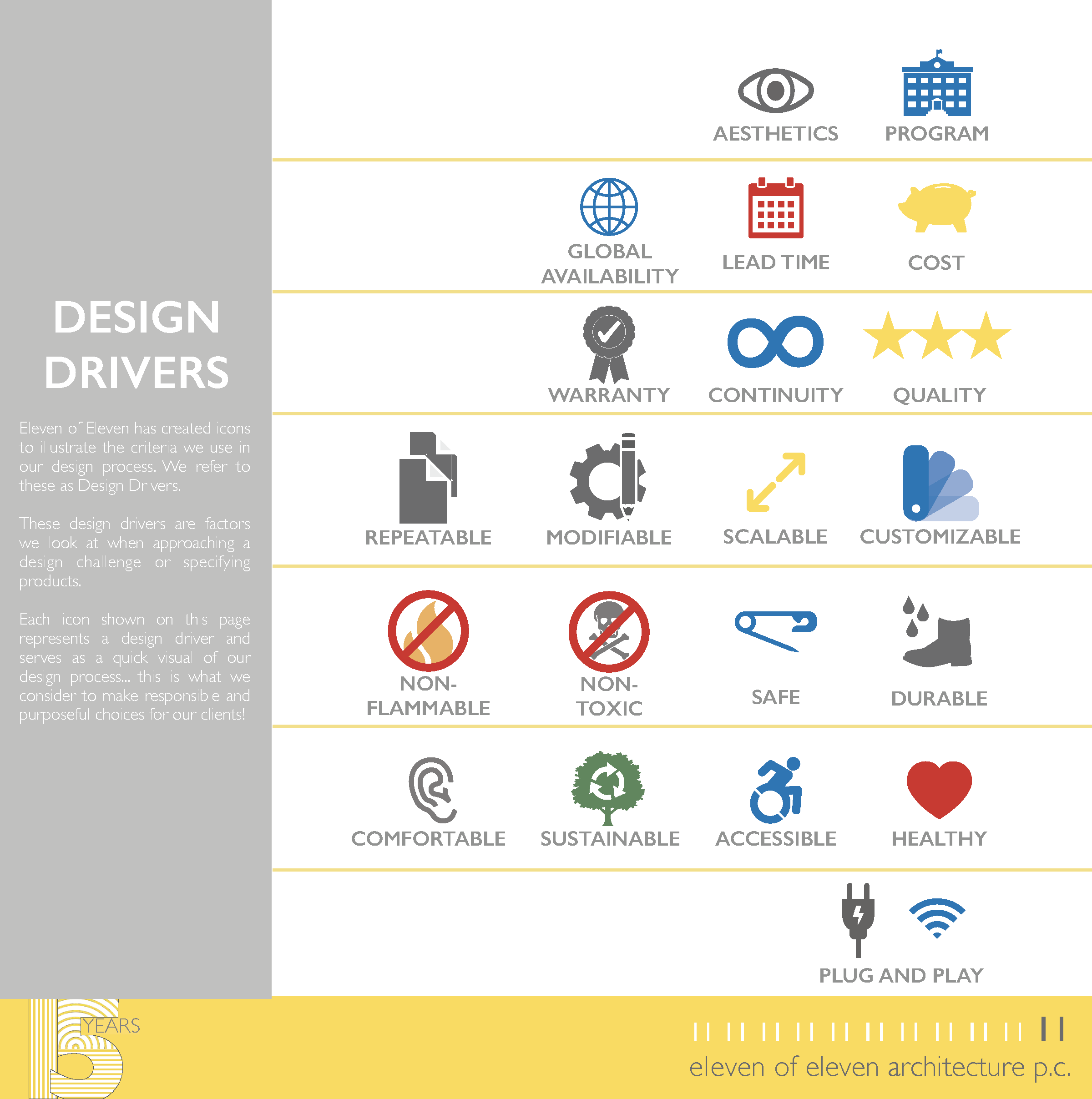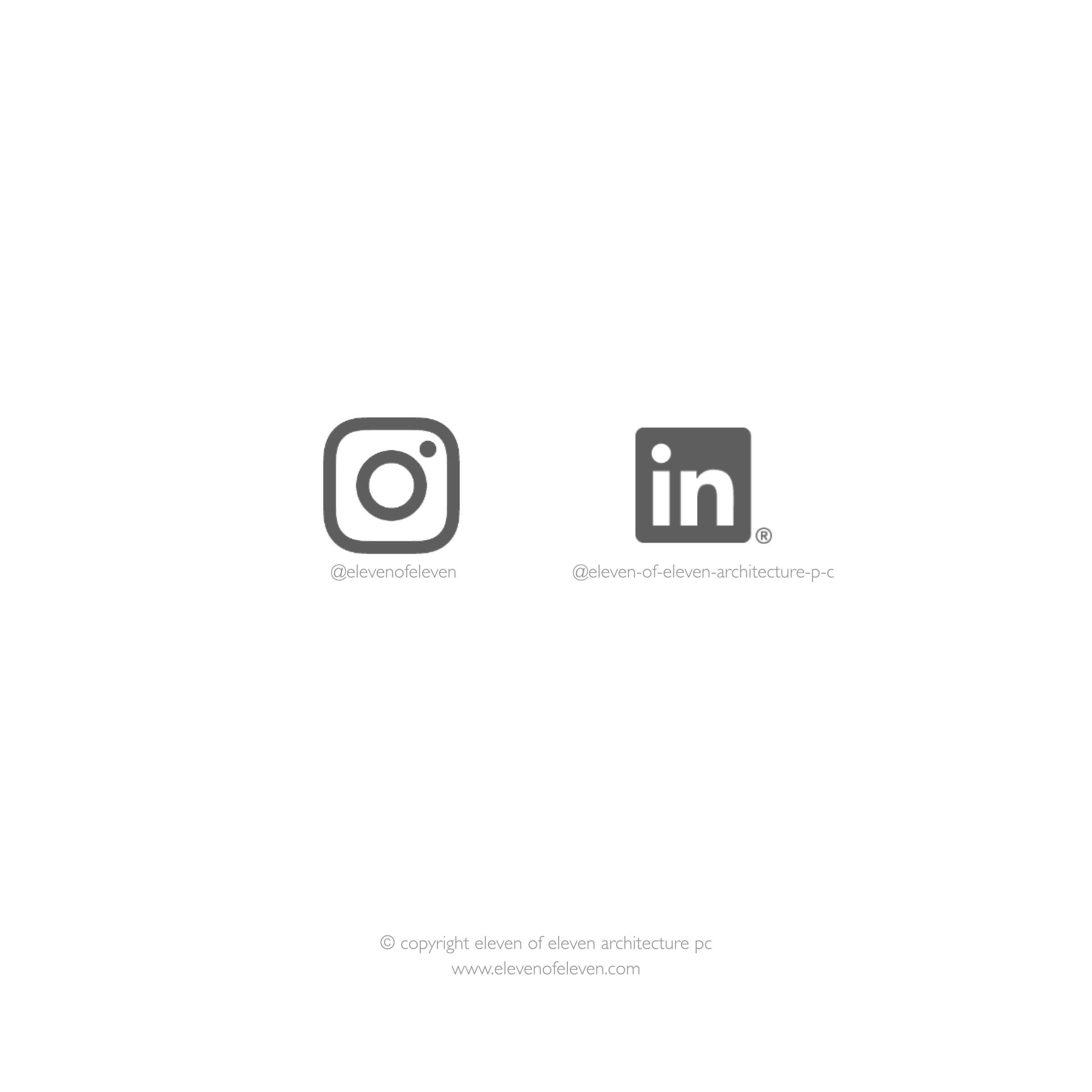CELEBRATING 15 YEARS OF SUCCESS
Top 15 Insights for Classroom Design
Eleven of Eleven Architecture is dedicated to client-centered design. Throughout our 15 years of experience, we have worked to help schools to grow with our design and construction expertise. Celebrate our 15-year anniversary with our Top 15 Insights for Classroom Design illustrated below!
Understand your students’ needs and plan for them.
For example, children engage best when they can help themselves. Typically in our classrooms, anything below four feet is accessible for early learners.
Define flexibility and design for it.
Consider what is needed and prototype options! Moveable does not always mean flexible. For example, electrical adaptability might be ceiling-mounted cord reels instead of floor or wall outlets.
Make life easier by integrating universal design!
Ensure inclusivity and accessibility for all learners, regardless of age or ability.
Nurture all learning styles by providing a variety of educational spaces.
Some students learn best individually, while some learn best in a group. Others are activated by kinesthetic or touch, some engage verbally or visually. The environment can support these needs when it is appropriately designed!
Maximize windows.
Daylight and views to the outside are proven to be good for students’ productivity and mental health.
Help learners to focus by bringing nature indoors.
Studies show that biophilia: seeing plants, hearing birds and water (even if they are artificial), are calming and help students focus. Spaces that incorporate a connection to nature are popular with students when they are given a choice!
Enhance indoor air quality by upgrading ventilation, filtration, and temperature control.
Thermal comfort is important for everyone in your school. If a space is drafty, hot, or stuffy, students and teachers will be uncomfortable and distracted. Choose HVAC systems that can switch easily between heating and cooling when possible. Shoulder seasons in the northern United States are growing, leaving outdated systems struggling to accommodate the users’ needs.
Optimize learning environments by fine-tuning the classroom acoustics.
Keep the classroom noise at a minimum by balancing background sounds from the systems. To attenuate noise so learners can focus, take advantage of the surfaces: ceilings, walls, and furnishings.
Choose eco-friendly materials and products that are non-toxic, renewable, and sustainable.
They are healthy for users and for the planet!
Create visual calm.
Most surfaces should be neutral and simple in color and material. This minimizes distractions and highlights the educational materials.
Be strategic with bright colors to help with identity and way-finding.
Colors can define areas and help everyone navigate.
Take advantage of vertical space to add more storage.
Tall cabinets and upper cabinets may be hard to reach day-to-day, but teachers have seasonal and curricular needs for long-term storage within their classrooms.
Protect your maintenance budget.
Invest in quality design for high-traffic hardware and fixtures that get touched the most. Spending money on these items tends to make them more durable and more cleanable (or hands-free!). Pay special attention to quality materials for countertops, faucets, door and millwork hardware, appliances, and flooring.
Give teachers a generous personal storage space in the classroom.
Teachers have items they need to secure and personal effects that can attract unwanted attention. Everyone can concentrate better if classroom interruptions are minimized.
Partner with Eleven of Eleven Architecture!
Let us bring our expertise to your school's design, renovation, or expansion project.

